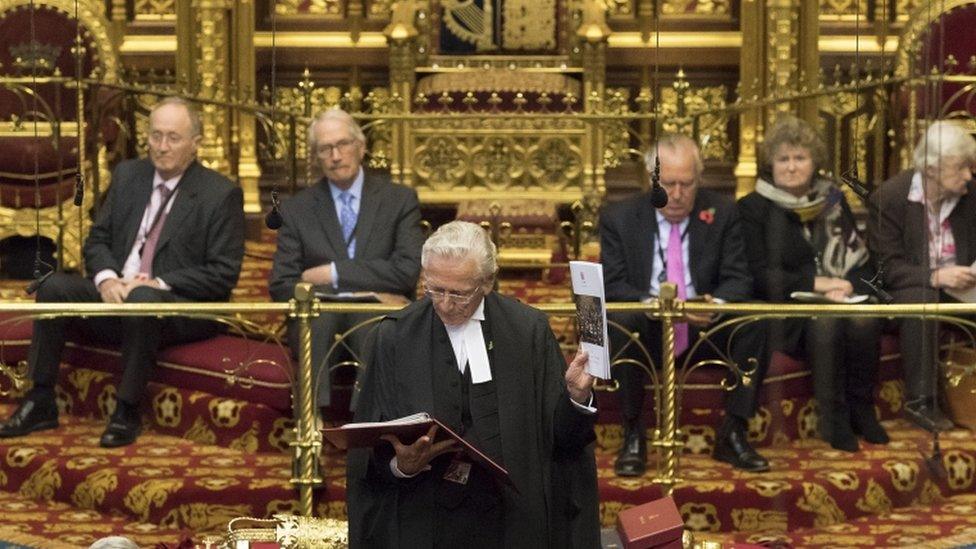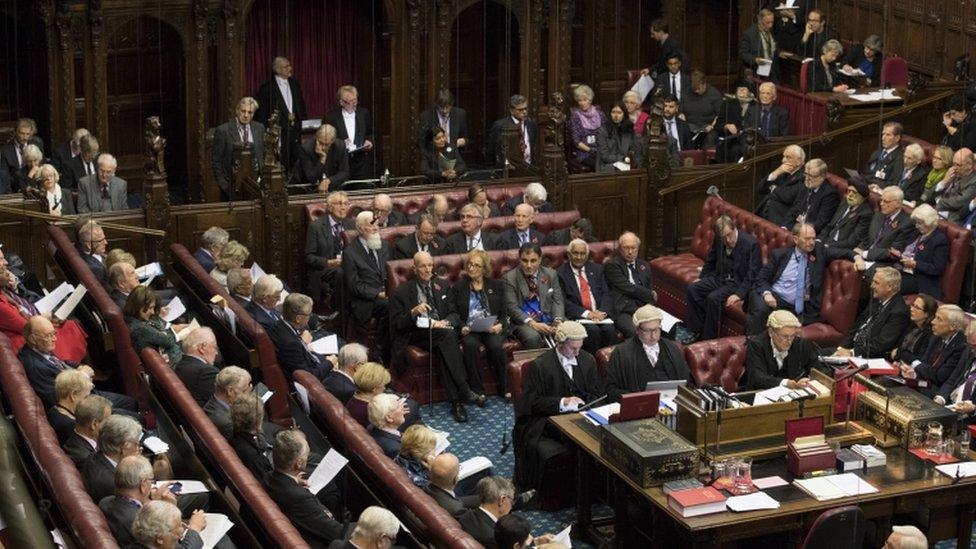Review proposes to cut Lords by a quarter
- Published
- comments

Plans to cut the size of the House of Lords by a quarter have been unveiled.
A cross-party committee of peers, external headed by the former civil servant, Lord Burns, external, proposes a "two out, one in" scheme to cut the number of peers from the current 800, down to 600 - and once that figure is reached the size of the House would be capped, with new appointments made for a 15 year term.
The report recommends that the parties in the Lords would agree to reduce their membership by stages over the coming years.
For every two peers who left, there would be one new peer appointed - but the number given to each party would depend on their performance at the latest general election. Over time, the committee says, this would mean that the composition of the Lords would reflect the political views of the country.
The effect would be that parties whose electoral performance fell below their share of seats in the Lords would, year on year, see fewer peers appointed to their benches than were retired from them.
But it would not, for example, result in an immediate cull of Lib Dem peers, to reflect their party's diminished performance in recent elections.
At the press conference held to launch the report, Lord Burns rejected any suggestion that this course of action had been the target of a self-interested veto by the Lib Dem member of his committee, Lord Beith, external.
The plan does not require legislation, but does need all the parties to sign up to it; in effect, it is Lords reform by gentlemen's agreement.
And there would be a cost. The plan would limit the patronage available to the prime minister and the other main party leaders, in the form of appointments to the Lords, although there would continue to be some new appointments every year.
So it would only work if they were all prepared to make their sacrifice. That is why all the party leaderships will be watching closely when peers get a chance to debate the report, probably in December.

Changes such as the exclusion of the 92 hereditary peers who continue to sit in the Lords, under a compromise brokered in the late 1990s, or the removal of the 26 Church of England bishops, would require new legislation, and so were not considered by the committee - although the report does note that the hereditaries and bishops would form a larger proportion of a smaller house, if its plan is put into action.
The government, it says, would have to consider whether this was sustainable in the long term.
The scheme would not, at first, change the political balance of the Lords chamber, with all the party groups and the non-party crossbenchers being required to meet a pro-rata target reduction in their membership - and the non-party peers or crossbenchers would be maintained at 20% of the total membership.
The report does not recommend imposing term limits or a compulsory retirement age on current members of the Lords - and it estimates that a combination of death and voluntary departures would mean it would take about 11 years to reach the target figure of a 600-member House of Lords.
Their interim targets are for 150 peers to leave the House between 2017 and 2022, with a further 250 going by 2027, and 150 more by 2032.
In return for meeting their share of the target, the party groups would be entitled to a certain number of new appointments, if they had won more seats in the Commons.
Government response
The Leader of the Lords, Baroness Evans of Bowes Park, external, gave a noncommittal response, noting that Lords reform legislation was not a priority for the government.
"Any reforms will need to command consensus across the House in order to have any chance of success," she said. "We will listen closely to what the House has to say in response to the report, and will make time for a debate on it before Christmas."
The Burns plan is a classic carefully balanced and nuanced product of a high-end civil servant; but all sides could find objections to it if they wanted.
The question now - with the number of peers on course to rise to a thousand at the current rate of increase - is whether they will calculate that a loss of patronage is a price worth paying for cutting the current inflated size of the House of Lords.
A Labour Lords spokesman welcomed the report as "serious and thoughtful", adding: "We look forward to discussing the recommendations with colleagues from across the House, but in the absence of upcoming legislation on Lords reform we would also hope for a positive response from the government."